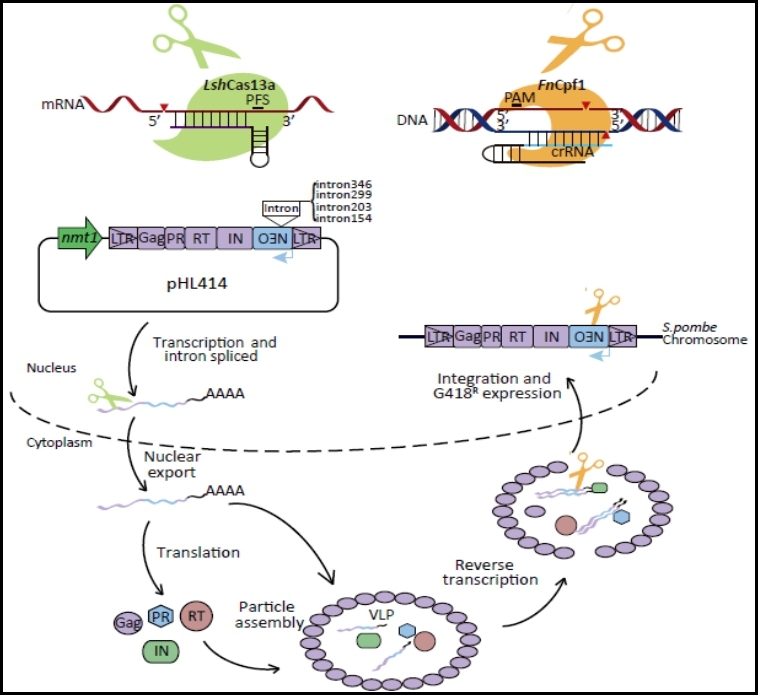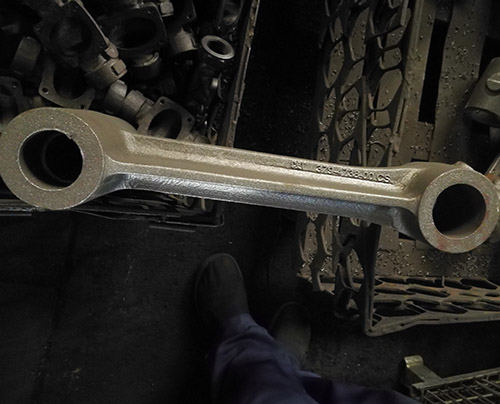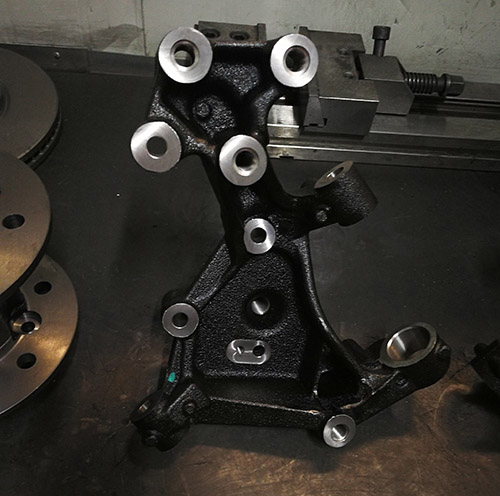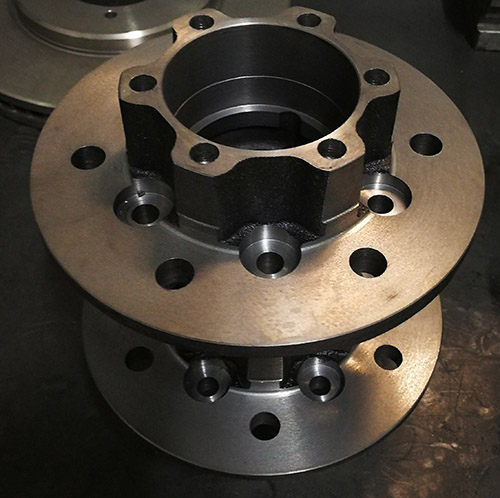[ Instrument R & D of Instrumentation Network ] On May 19th, Cell Discovery published a collaborative research paper on the use of RNA editing strategies and editing interventions for retrotransposons by Hao Pei, a researcher at the Shanghai Institute of Pasteur, Chinese Academy of Sciences. This study used the characteristics of two different stages of DNA and RNA in the life cycle of retrovirus / retrotransposon, and used the strategy of RNA editing for the first time to realize the retrotransposon Tf1 (similar to the retrovirus model Biological) editorial intervention. At the same time, the work also used CRISPR-Cas12a for the first time to edit the DNA stage of the retroviral pathogen, which achieved 100% editing intervention efficiency.

This research has opened up new ideas for editorial intervention on retroviral pathogens (including exogenous retroviruses, endogenous retroviruses, and retrotransposons). It provides new technical strategies and establishes system parameters for the application of RNA editing and DNA editing technologies in retroviral infection to block endogenous retroviral inactivation and germplasm resource cultivation.
Structural characteristics of reverse transcripts
The key enzymes for reverse transcription are reverse transcriptase and integrase (IN). The reverse transcript itself encodes reverse transcriptase and integrase. According to the structure: it has a long terminal repeat structure (LIT) similar to retrovirus, and contains gag and pol genes, but no envelope protein gene enu, does not have LTR but has 3'polyA, and its central coding region contains gag and pol In similar sequences, the 5 'end is often truncated.
On the other hand, due to the nuclear structure of eukaryotes, their transcription and translation processes are separated in time and space. Transcription-related enzymes are not encoded by mobility factors, but are provided by other genes through trans action.
In recent years, the CRISPR system has begun to develop as a very promising and important technology against retroviral pathogens (including exogenous retroviruses, endogenous retroviruses, and retrotransposons). Exogenous and endogenous retroviruses are serious causes of human diseases. Well-known exogenous and endogenous retroviruses that cause disease include HIV-1, HTLV-1, HERV-K and so on. Early scientists tried to use CRISPR-Cas9 editing to eliminate HIV-1 in patients, suppress endogenous retroviruses (ERVs) in pigs, and eliminate the interference of retrotransposon Tos17 in rice breeding, and made certain progress.
RNA editing refers to the phenomenon of base addition, loss or conversion of transcribed RNA in the coding region. The "gene" produced by RNA editing may be called a crytogene, and the structure of its product cannot be deduced from the genomic DNA sequence. As early as 1986, it was discovered that after trypanosome mitochondrial mRNA transcription processing, uridine was added or lost at multiple coding positions of its mRNA. In 1990, the above phenomenon was also found in higher animals and viruses. During the expression of some proteins, it was found that a new coding sequence was generated or the coding sequence was changed, and this change did not occur at the DNA level. But at the RNA level, it usually adds some bases that were not encoded in the original DNA template. This phenomenon is caused by RNA editing.
Although Cas13, a CRISPR subtype VI specifically targeted for editing RNA discovered in recent years, provides new possibilities and technical strategies for editing interventions against retroviral pathogens. Since the retrovirus / retrotransposon has two different stages of DNA and RNA in its life cycle, in theory, the method of RNA editing can effectively intervene and fight against retroviral pathogens by editing RNA intermediates, but this technical strategy It has not been explored so far. In addition, in recent years, it has been found that Cas12a, which is similar to CRISPR-Cas9 and works on DNA, has some excellent characteristics, including different requirements for the PAM region, the ability to generate crRNA by self-treatment, and higher targeting efficiency. But so far, there has been no report that Cas12a should be used to edit and interfere with retroviral pathogens. This research has made new progress in the following aspects:
A reporting system for Tf1 reverse transposition was constructed. In order to apply the technical strategy of RNA editing (using Cas13a) and the intervention of Cas12 on the editing of reverse transcription pathogens, Hao Pei's group and collaborators first constructed a reporting system for Tf1 retrotransposition. They introduced reverse introns in the NEO gene of Tf1 (construction of up to 4 different intron sequences), so that the newly formed Tf1 product after Tf1 transcription splicing would not have these introduced introns. Then by designing crRNA, we specifically targeted these newly formed Tf1 products without introns in the experiment.
It is the first demonstration that RNA editing significantly interferes with the inhibition of Tf1 reverse transposition activity. Hao Pei's group and collaborators designed Cas13 to target two specific sites of Tf1 intermediate transcripts and randomized controlled experiments, and obtained a significant editing inhibition effect of 16% and 60% on Tf1 transposition activity. These results prove for the first time that RNA editing is an effective intervention strategy for retroviral pathogens. Furthermore, comparing the phenomenon that Cas13a binding to the target is activated (due to its chaotic cleavage activity) and causes the growth of prokaryotic host cells to stagnate, the researchers did not observe the phenomenon that Tf1 activation in eukaryotic hosts caused the cells to stop growing. This implies the safety of RNA editing technology in eukaryotic hosts, and also shows that Cas13a has a different mechanism of action in eukaryotic cells and bacterial cells.
The main types of RNA editing are:
â‘ Simple editing, post-transcriptional regulation of single base conversion;
â‘¡Insert editing, the insertion of a single nucleotide or the loss of a small number of nucleotides, the mechanism is the jump of the transcription chain;
â‘¢Pan editing, inserting or deleting multiple uracil nucleotides or inserting multiple cytosines after transcription, the mechanism is that the editing sequence is provided by exogenous antisense guide RNA (gRNA), and the gRNA is in the editosome nuclear protein particles Pair with the pre-edited mRNA in the middle and identify the site as a mismatch for editing;
â‘£ Edit polyadenine, add adenine to the end of the transcription product, and perfect the stop codon.
For the first time, CRISPR-Cas12a was used to implement editing intervention in the DNA stage of retroviral pathogens. By designing Cas12a to target multiple specific sites of Tf1 reverse transcripts (5 crRNA designs) and randomized controlled experiments, it was found that Cas12a significantly inhibited the editing of Tf1 reverse transposition (up to 90%)-although there are still The residual Tf1 transposition takes place. The researchers speculate that the residual transposition activity is due to the protection of Tf1 intermediates by VLP packaging. So further, by prolonging the expression time of crRNA, the residual transposition activity is completely eliminated, and the editing intervention efficiency is 100%.
These research results have opened up new ideas and methods for editing interventions on retroviruses / retrotransposons. Comparing the different action mechanisms of RNA editing and DNA editing, the quantitative analysis of the effects of the two types of mechanisms on the replication and transposition of retrogenic pathogens was completed, which established the basis for the development of new technology strategies and provided system parameters.
Source: Encyclopedia, Shanghai Pasteur Institute
Iron Castings -- Cast Iron Automotive Parts
Main products include connecting rod, steering knuckle, brake block, brake drum, brake disc, gearbox parts, chassis structure parts, pressure plate and so on.
Material allowed: common grey iron and ductile iron, high customized chemical Cast Iron (SiMo ductile iron, high chrome casting iron)
The most common used grey iron is HT200 and HT250, ductile iron is QT400 and QT500.
Equipped with advanced manufacturing equipments including 6 automatic molding lines, 22 sets electric furnaces, 120 sets machining equipments, and advanced inspection equipments and so on.






